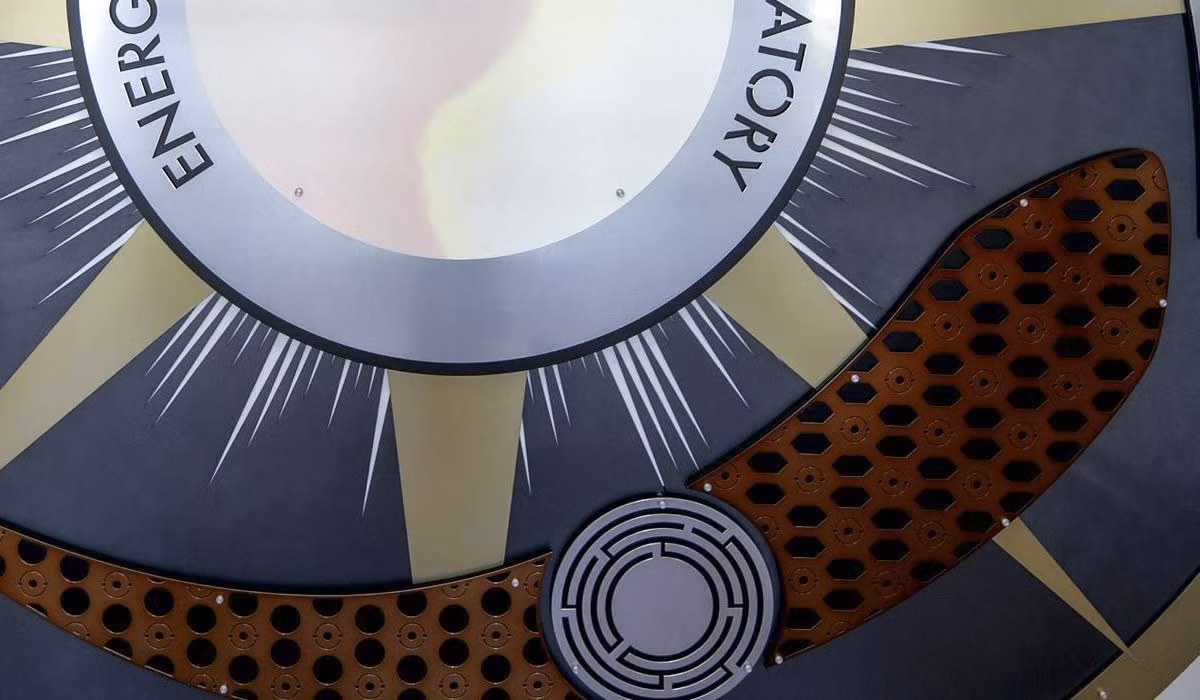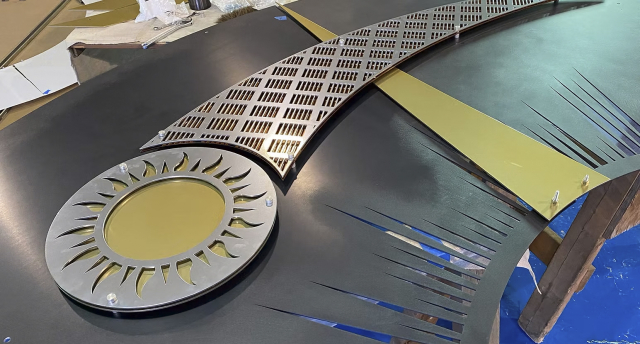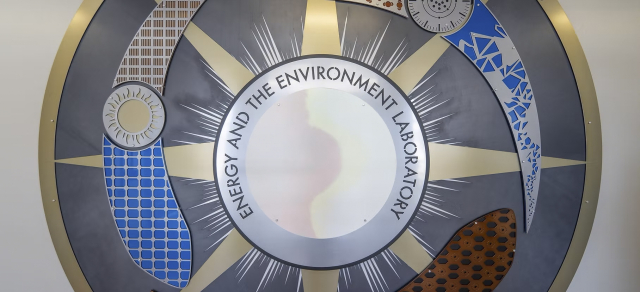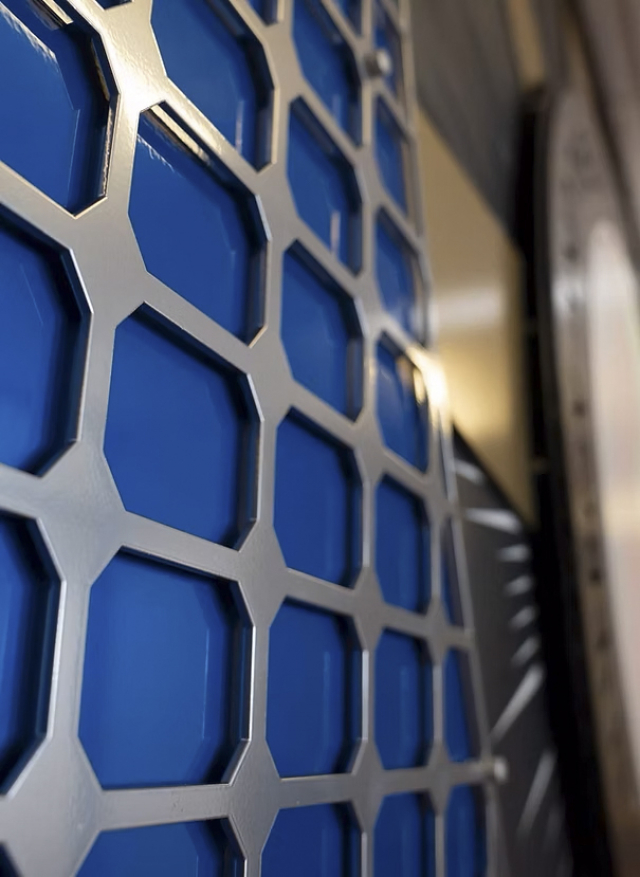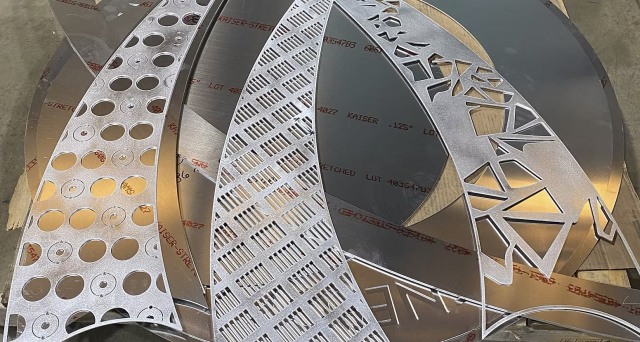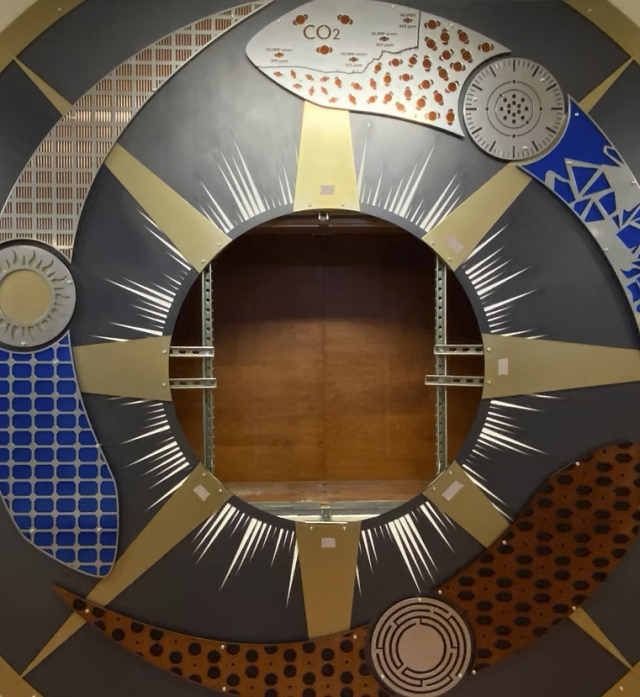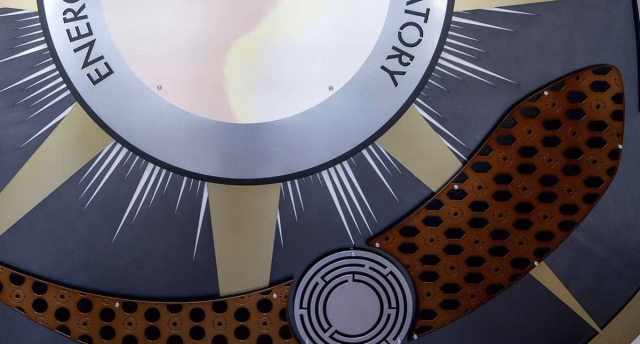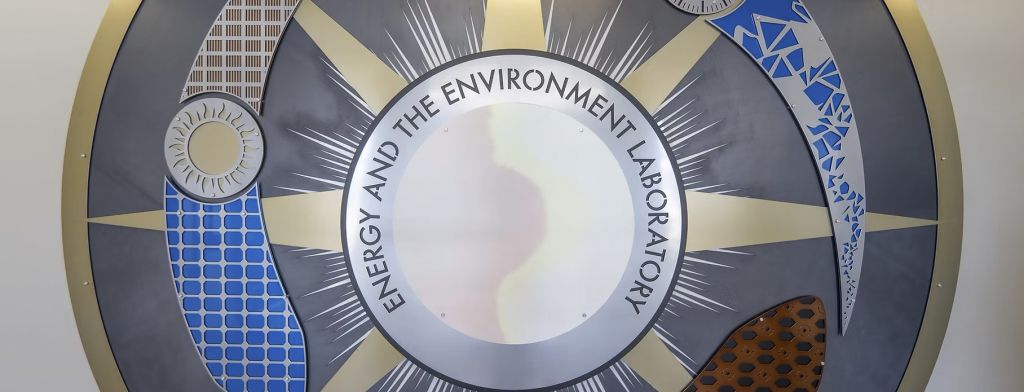
The wall sculpture in the lobby of the Energy and Environment Laboratory building represents the complex research IEE faculty and researchers are performing. Each theme reveals aspects of the research through patterns, materials, and symbology. The wall sculpture is fabricated from primarily aluminum, with a powder-coated or anodized finish.
Top Right Eel
Research on Climate and Environmental Topics
The Environmental Research “Eel” represents research on climate and environmental topics, including carbon dioxide levels (head of the eel), carbon dating, water quality, and microplastics. In a nod to the 45,000-year time frame of the carbon dating lab, the graph in the head shows the CO2 increase. The center circle displays a clock to represent time, as well as a Carbon 14 symbol. The broken pieces in the “tail” of the eel hint at the breakdown of plastics in our ecosystems and could be seen as breaking the glaciers/polar ice caps.
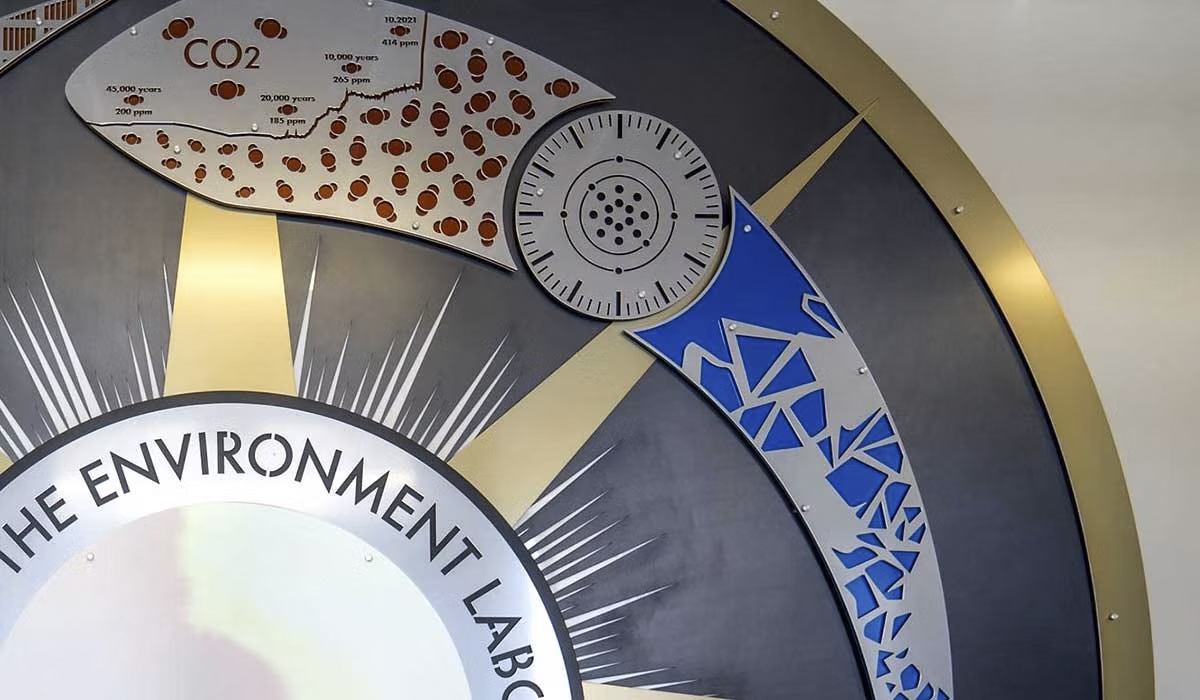
Top Left Eel
Energy research
This “eel” represents Energy Research. The head of the eel shows the familiar solar panel pattern (with the blue often seen in solar panels). At the same time, the tail represents the perovskite solar module pattern (with copper often used in perovskite).

Bottom Eel
Battery Research
This “eel” represents Battery Research. The head of the eel is an anode pattern, with the ions and the hexagon representing the metal-carbon often used in the anode. The eel’s tail represents a cathode pattern with ions and metal oxide circles. The maze in the center represents the many research paths seeking to find new materials for the electrolyte and construction of batteries.
